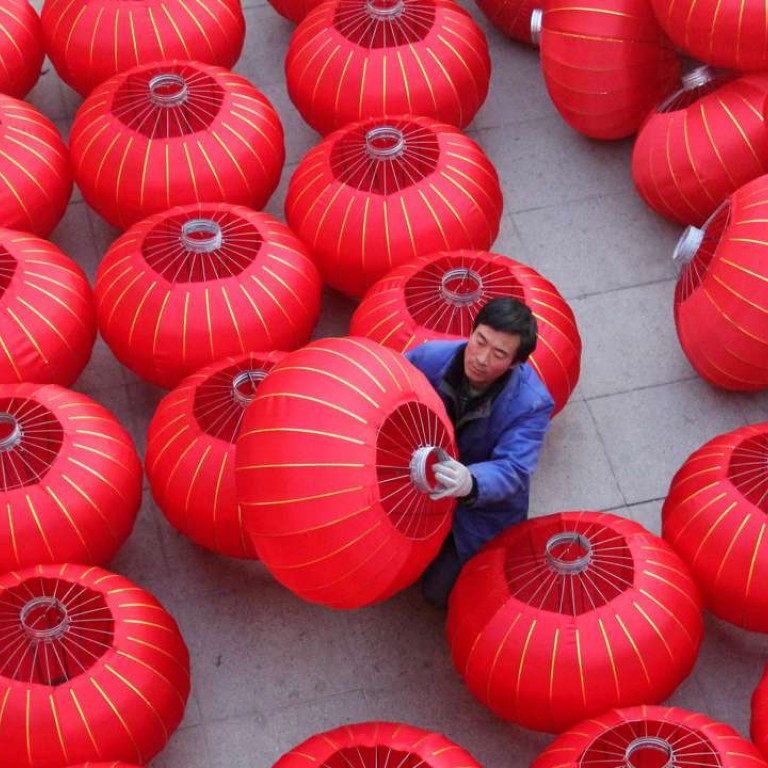
What’s holding back China’s consumption growth?
As China’s economy slows, pressures are building up on employment and income growth, dragging down retail sales and threatening the outlook for consumption growth.
Wage and household income growth has weakened in China, while jobs also declined in state-owned firms and private companies, posing risks to a revival of domestic demand and an upturn in private consumption, say analysts.
China’s personal disposable income grew at a slower pace of 6.5 per cent in the first quarter, compared with 7.4 per cent in 2015, the National Bureau of Statistics reported recently. The percentage fall in income growth was much bigger than the percentage decrease in GDP during the same time period, as China’s GDP growth slowed to 6.7 per cent in the first quarter from 6.9 per cent in 2015.
“Household income growth has weakened significantly, posing a threat to the prospect for consumption,” said Gao Yuwei, a researcher at International Finance Institute for Bank of China.
Consumer sentiment has plunged in recent months, as the consumer sentiment index hit a 28-month low of 100 in March, versus 104.4 in February. Retail sales also increased more slowly than expected in April at 10.1 per cent, versus 10.5 per cent in March.
In the meantime, private statistics about China’s job market also paint a gloomy picture about consumption growth outlook.
“The result of (our updated wage and employment analysis) shows little sign of wage growth acceleration, but rather increasing pressures on employment, especially on the ‘white collar’ and SOE jobs,” Dawei Feng and Terrance Liu, analysts for CLSA, said in a recent research note. “We don’t think the job market is supportive of a broad consumption growth pick-up in 2016 as compared to 2015.”
CLSA has recently updated its wage and employment analysis to add in 2015 figures from 41 listed Chinese companies as most firms have published their annual reports.
Although the Chinese government also releases a limited set of unemployment figures, investors and market watchers have been frustrated about the reliability of the data for many years, as the official jobless rate – registered urban unemployment rate – usually swings between 4 per cent and 4.3 per cent despite economic fluctuations. Last month, the Ministry of Human Resources and Social Security said China’s urban unemployment rate stood at 4.04 per cent by the end of first quarter, almost unchanged from 4.05 per cent at the end of 2015.
However, CLSA analysts said China’s employment and wage growth may be facing serious challenges and could become a big drag on consumption growth in 2016.
According to the survey, total staff count for the so-called “white collar” jobs in private companies and SOE jobs declined year on year in 2015, the first decrease since the firm started the research in 2010.
“White collar” jobs usually refer to jobs that entail mental or clerical work in an office, as opposed to “blue collar” jobs that often require manual labour.
Nevertheless, “blue collar” jobs registered growth but it is mostly driven by new positions in electric car maker BYD and China Railway Rolling Stock Corporation (CRRC), CLSA analysts said.
Meanwhile, wage growth per headcount for “blue collar” jobs dropped significantly to 3 per cent year on year in 2015, compared with a 8 per cent increase in 2014.
Wage growth per headcount for SOE jobs also slid to approximately 2 per cent in 2015, compared with 4 per cent in 2014 and 8 per cent in 2013. Wage growth per headcount for “white collar” jobs remained stable at 6 to 7 per cent, but it was “at the expense of about 4 per cent total labour count cut in 2015”, said Feng from CLSA.
“So the aggregate salary pool (for ‘white collar’ jobs) was only up by about 2 per cent on year-on-year basis for the 15 sampled white-collar employers,” he said.
He added that their employment data about “white-collar” jobs were based on 15 Hong Kong-listed major Chinese private companies – mostly in the consumer sector – over the past few years. They include Gome Electrical Appliances, Mengniu Dairy, Tsingtao Brewry, among others.
SOE employment statistics were from 12 Hong Kong-listed Chinese SOEs, mostly telecommunication companies, banks and oil names, including China Telecom, ICBC, and PetroChina. “Blue-collar” job data were based on 14 Hong Kong-listed manufacturers, resource companies and construction companies, including BYD, Yanzhou Coal Mining.
“We only anticipate a mild consumption rebound in 2016,” CLSA analysts said.
“With income growth staying in mid-single digits, we do not expect demand growth to exceed 10 per cent at the aggregate level,” they predicted.
In particular, offline consumer companies, such as hypermarkets, may post modest sales growth in 2016 and 2017, much lower than market consensus, CLSA analysts said.
They expect the year-on-year sales growth for offline consumer companies to reach 6 per cent in 2016 and 7 per cent in 2017, versus the consensus forecasts of 11 per cent and 14 per cent growth in 2016 and 2017 respectively.

